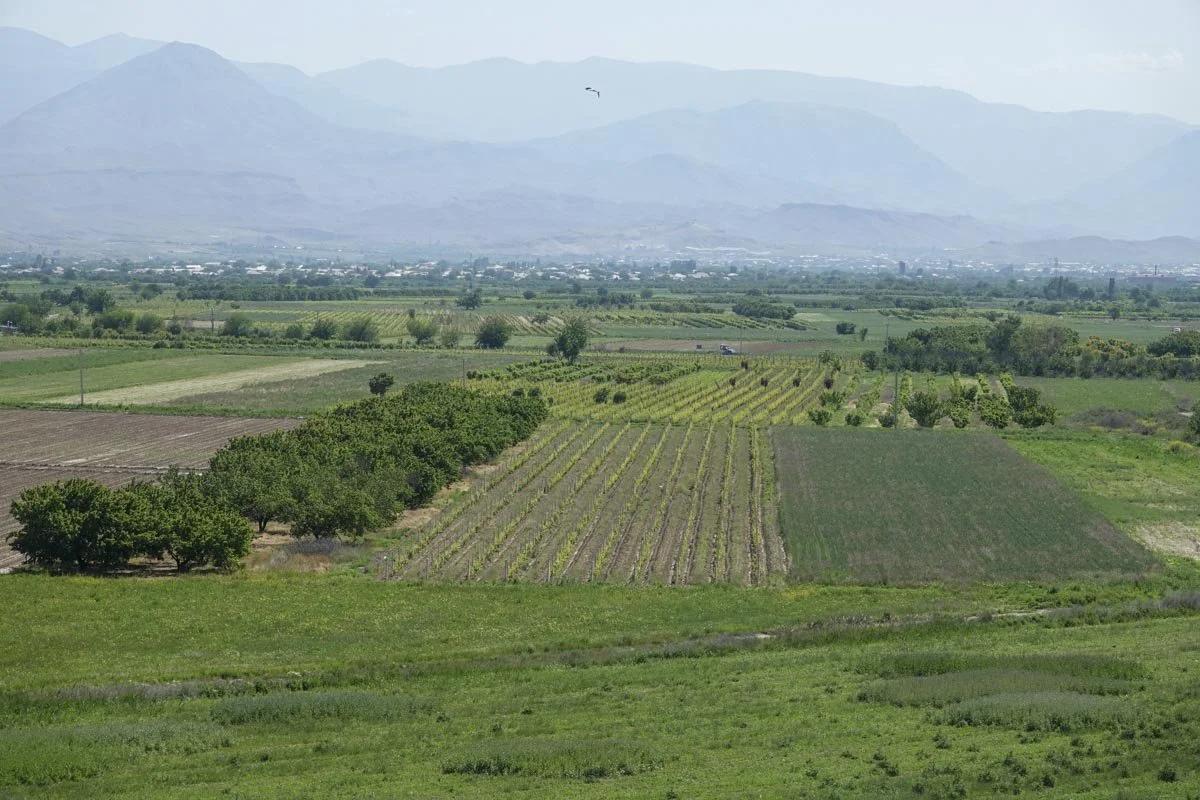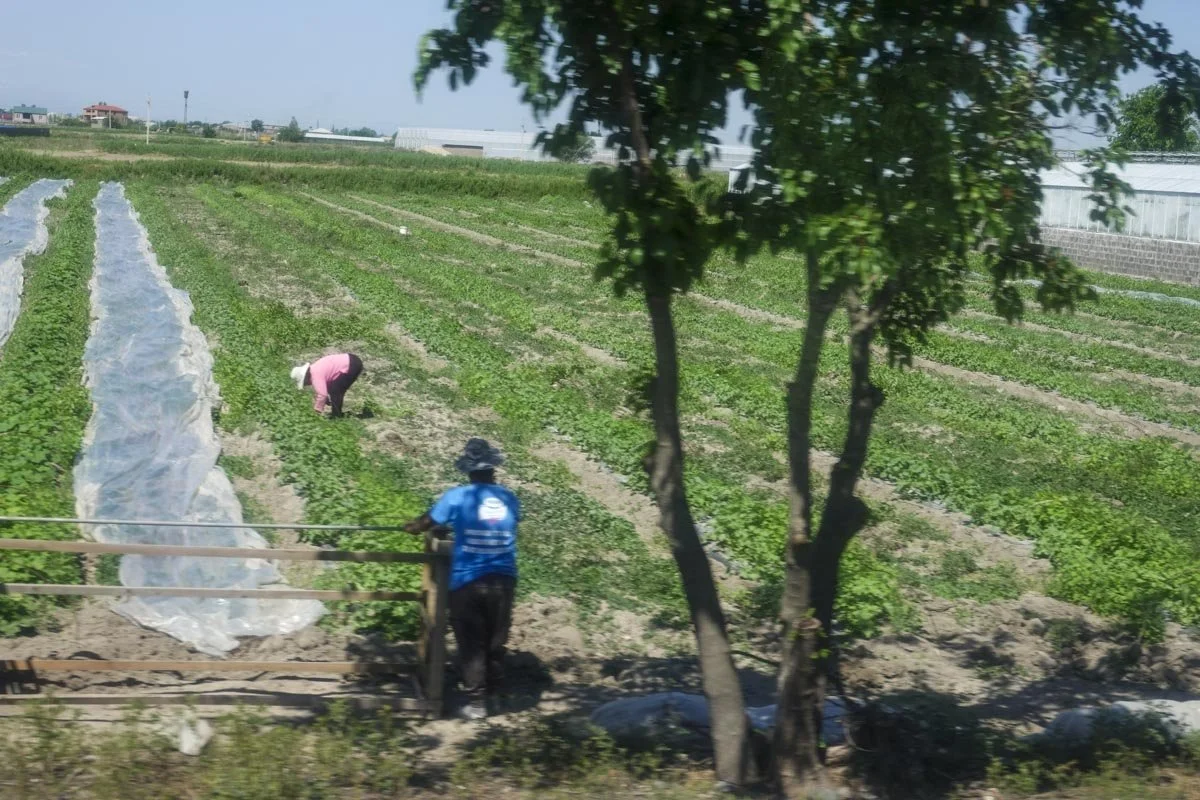Armenian Agriculture
I knew some Armenian farmers in Stockton when I was growing up, so I thought agriculture would be the leading industry in Armenia. I was wrong. The mining industry accounts for about half of Armenia's exports. Agriculture might be the number two industry, but it depends on how you measure it. Some 30 percent of the workforce are in agriculture, so that's a big number. The agriculture sector is divided about half and half between crops and animal husbandry.
Crop cultivation focuses on wheat and barley plus fruits such as figs, apricots, olives, and pomegranates. They also raise lots of vegetables. Animals include sheep, goats, cattle, and horses.
While Armenia has over 335,000 farms, the average farm is only about 3.5 acres which is very small. Fortunately for me, the Ararat Valley is the primary agricultural area, and we spend most of our time there.
The first photo is just a general photo, but a good one as I was on a high hill to take it.
We did manage to see quite a few wheat fields and some of them were relatively large, like below.
In terms of orchards and vineyards, grapes were still the crop that I saw the most of on our trip.
In Armenia and the Caucasus, we had excellent fresh tomatoes and cucumbers with every meal, but I never saw any growing in any farm fields. I finally asked our guide who said that they were all grown in greenhouses. It took me awhile but in this area, I saw lots of greenhouses.
One peculiar thing was that I rarely ever saw a person working in the agriculture fields, save for some guys operating tractors. The photo below is only included because it was such a rare site on this trip. (a moving bus photo)
I didn't see a lot of bee hives but the ones that I did see were peculiar. In the US, bee hives are always all white in color. I have been to a few other countries where they decorate their bee hives. But I had never seen hives of various colors with no decorations, but I guess they still work. We were served honey frequently.
We already visited a Lavash bakery. But after seeing it, I started to pay more attention to the piles of brush along the roadways. It turns out that lots of farmers sell fresh breads along the road, as part of their farming business. In our country, we might sell fruits, vegetables, hay or other crops, along the road, but in Armenia, the farmers sell fresh breads. At this farm, they were selling “Zhingyalov hats” which is an Armenian flatbread stuffed with finely diced herbs and green vegetables. It's tough to beat their fresh breads. This woman was right in the corner of their wheat field and the yard of their house.







